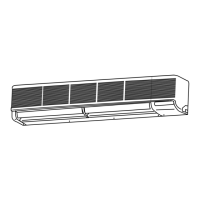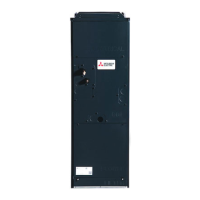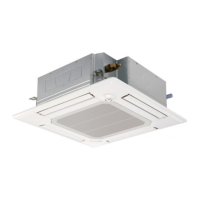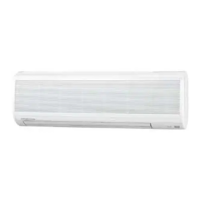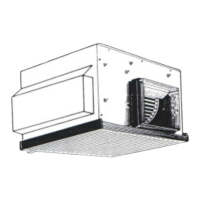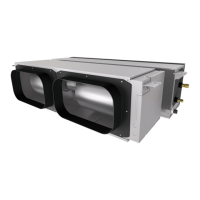32
WT09050X01
9-6. Air-tightness test
Do not use oxygen, flammable gas, or a refrigerant containing chlorine for air-tightness
testing.
- Doing so may result in an explosion. Chlorine will deteriorate the refrigerant oil.
After refrigerant pipe installation is completed, check the system for leaks by conducting an air-tightness test. If there
is a leak, the composition of the refrigerant will change and the performance will drop.
<Air-tightness test procedures>
① Make sure the service valves are closed.
② Add pressure to the refrigerant pipes through the service ports of the high- and low-pressure pipes.
* Pressurize to the design pressure (4.15 MPa) using nitrogen gas.
③ If the pressure holds for one day and does not decrease, the pipes have passed the test and there are no leaks.
If the pressure decreases, there is a leak. Look for the source of the leak by spraying a bubbling agent (e.g.,
Gupoflex) on the flared or brazed sections.
④ Wipe off the bubbling agent.
LO
HI
Ⓐ
Ⓓ Ⓔ
Ⓒ
Ⓑ
Ⓑ
Ⓗ
Ⓘ
Ⓙ
Ⓖ
Ⓐ Nitrogen gas
Ⓑ To indoor unit
Ⓒ Gauge manifold
Ⓓ Low pressure knob
Ⓔ High pressure knob
Ⓕ Service valve
Ⓖ Low-pressure pipe
Ⓗ High-pressure pipe
Ⓘ Outdoor unit
Ⓙ Service port
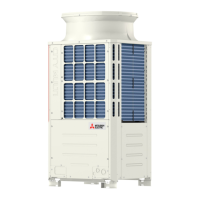
